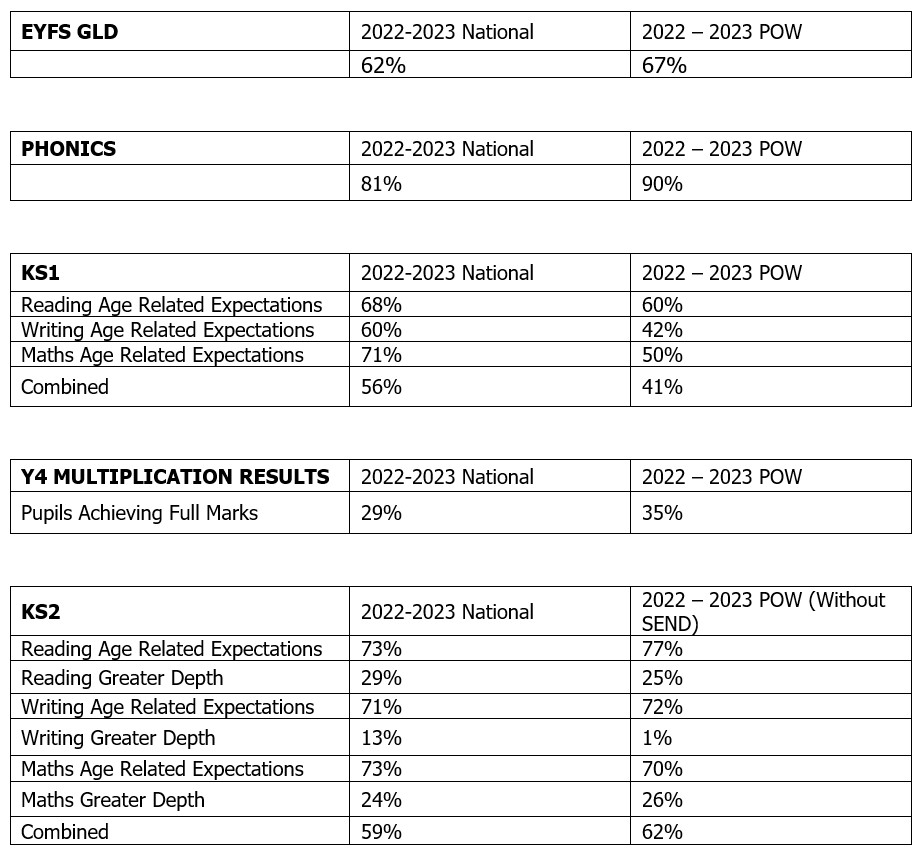Assessment & Data
Assessment Information
Early Years Foundation Stage (EYFS)
The EYFS Profile summarises and describes children’s attainment at the end of the EYFS. It is based on ongoing observation and assessment in the three prime and four specific areas of learning, set out below:
The prime areas of learning:
- communication and language
- physical development
- personal, social and emotional development
The specific areas of learning:
- literacy
- mathematics
- understanding the world
- expressive arts and design
Children are defined as having reached a good level of development at the end of the EYFS if they have achieved at least the expected level in:
- The early learning goals in the prime areas of learning (personal, social and emotional development; physical development; and communication and language) and
- The early learning goals in the specific areas of mathematics and literacy.
Year 1 Phonics Screening Check
The phonics screening check is a short, light-touch assessment to confirm whether individual children have learnt phonic decoding to an appropriate standard. It will identify the children who need extra help so they are given support by their school to improve their reading skills.
End of Key Stage 1 SATs
At the end of Key Stage 1, teachers use teacher assessment judgements to report on the progress of their pupils. These assessment judgements take into account a pupil’s performance in national curriculum tests (often referred to as SATs) in mathematics, English reading and English grammar, punctuation and spelling. Writing results are solely based on teachers’ assessments of pupils’ writing over time.
End of Key Stage 2 SATs
The National expectation for children at the end of Year 6 is to achieve a scaled score of 100 or more. Currently, there is no National measure for pupils working at greater depth in Reading, Mathematics and SPAG; in the table below, pupils achieving a scaled score of over 108 have been considered to be working ‘at greater depth’.



